What are the Different Types of Hard Drives?
Data storage technology has been one of the more important fields of tech development in the last couple of decades. In just several years, we have managed to reduce the size of 1TB of storage data from large, standalone drives that had to be powered independently to small microSD cards. Nowadays, there are more and more storage options available to the average consumer that are cheaper, more portable, and more reliable.
Although microSD cards and thumb drives are all the rage today, our computers and laptops still rely heavily on the tried and test hard drives. There’s nothing old-fashioned about today’s hard drives, though, as there are now different types that you can choose from. What are the different types of hard drives and which one should you choose?
Small Computer System Interface
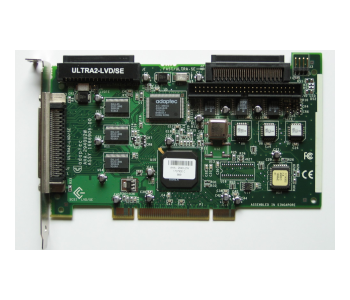
The Small Computer System Interface (SCSI) was developed in the 1970s and was first known as Shugart Associates System Interface (SASI) after the firm that created it. It used a 50-pin flat ribbon connector to connect hard drives and other peripheral devices to computers. More popularly called “scuzzy,” the SCSI standard was adopted by most of the tech and hardware leaders of the time.
With a standard interfacing technology, SCSI allowed between 7 to 15 devices to be connected to a single motherboard. This helped computers at the time adopt a simpler, less cluttered, and cheaper form factor. Earlier versions of SCSI connections use exclusively parallel interfaces, but later iterations allowed serial connections that offered faster data transmission.
Although SCSI is considered mostly obsolete, SCSI interfaces can still be found in some low-end computers. Modern SCSI cables can transmit data up to a rate of 80 MB/s – a number that truly speaks to the age of this technology. Nowadays, working with SCSI devices can be particularly troublesome considering that about a dozen varieties of SCSI connections have been developed through the years. Finding the right cable for the port of the device you’re using can be quite a headache.
Parallel Advanced Technology Attachment
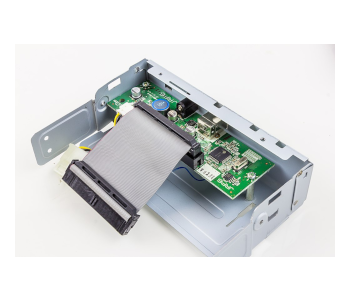
Also known as Integrated Drive Electronics (IDE) or Enhanced Integrated Drive Electronics (EIDE) drives, Parallel ATA (PATA) drives were the first hard disk drives to use the PATA interface standard for connection to computers. Developed by Western Digital in 1986, the introduction of PATA drives provided a drive with a common interface that can be used across the different devices commonly used at that time.
The first models of the PATA drive used a 40-wire cable that terminated in a broad 40-pin connector. Later versions had 80 wires, which effectively increased data transmission rates. If you’ve worked with computers for a long time, then you’re probably familiar with the distinct look of the ribbon cables that are used to connect PATA or IDE drives.
PATA drives are capable of data transmission rates of up to 133 MB/s. Two PATA drives can be connected using a single cable in master/slave configuration. Since most motherboards can have two channels for IDE connections, up to four PATA drives can be connected to a single motherboard.
Data is stored in a PATA drive on a rotating disk using magnetism. When the drive is engaged, a read-write head moves very close to the surface of the disk while the disk rotates. Changes in the magnetization of the material are detected by the read-write head and converted into data. Conversely, the read-write head can also make changes to the magnetic properties of the disk to store additional data. Although magnetic storage has technology has evolved through the years, this same basic principle is still heavily used until today.
Here’s the thing about PATA drives: they are obsolete. If you walk into any computer store today, it would probably be very unlikely for you to find any PATA drives. The main reason for this obsolescence was the development of its successor – the SATA drive.
Serial ATA Storage Drive
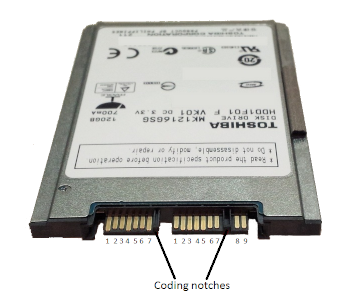
A Serial ATA (SATA) hard drive is still considered the most common type of hard drive in use today. If you’re using a mid-range laptop or PC, chances are that it works with a SATA hard drive. They are supported by virtually all computer motherboards and operating systems, which makes them excellent all-around storage solutions.
SATA drives are typically either one of two sizes: a 3.5-inch hard drive used for desktop computers and a small 2.7-inch version that is used for laptops. They are also used for popular gaming consoles like the Playstation 4 and the Xbox One. They have excellent storage capacity, good transmission speed, easily available, and are quite affordable.
There are several reasons for why the SATA drive was considered far more superior to PATA. The most important reason was associated with data transmission rates. While the PATA interface was only capable of transmitting data up to 133 MB/s, the first version of the SATA interface already bested it with a 150 MB/s rate. Further developments of the SATA interface were able to push this number up to 600 MB/s. However, the limitations of magnetic storage media meant that the full potential of the SATA interface could never be truly realized by a SATA hard drive.
Physically, SATA and PATA drives can be easily distinguished by the types of interface and cables they use. While PATA cables and ports were broad and thin, SATA cables were less than a centimeter thick and connected using only seven pins. SATA cables are limited to a length of 1 meter. SATA drives also do away with master/slave configurations. Instead, each SATA drive can be connected to the motherboard using a single data cable.
The magnetic disks of SATA drives rotate at different speeds depending on the model you buy. Speeds can reach up to 10,000 RPMs to increase data transmission. Storage devices used in big servers can even spin up to 15,000 RPMs. However, higher RPM SATA drives are also more prone to malfunctioning. In fact, mechanical failure is one of the major disadvantages of magnetic drives like SATA. Since there are so many moving parts involved in storing and retrieving data from a magnetic disk, there are also more instances and points for it to fail.
Solid State Drive
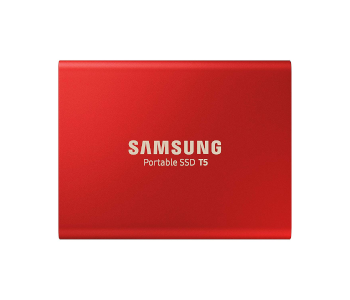
Today, solid-state drives (SSD) are at the forefront of storage technology development. There are now high-end laptops that come pre-equipped with SSDs, and you can also buy a portable one to take your files on the go. There have also been rumors that the next generation of gaming consoles will eschew traditional hard drives in favor of an SSD build. What is it about SSD technology that makes it so exciting?
The short answer is that it no longer uses magnetic storage technology. An SSD has no spinning disks or any other moving part. Instead, the data in an SSD is stored in semiconductor chips. Instead of a moving read-write head, an SSD is made of transistors and other electrical components that you would normally on a chip.
SSDs work using the concept of flash memory, which is the same one used in the motherboard’s random access memory (RAM). Specifically, an SSD uses NAND-type flash memory which packs transistors in a series configuration. This allows NAND cells to be packed more densely, therefore making it a more ideal and cheaper storage technology.
Instead, of a mechanical arm that reads data, recalling the data in an SSD is done by a central controller. Without moving components, SSDs are capable of data transmission rates way beyond what was possible with magnetic disks. This lack of latency can be felt in all computer-related tasks: from booting up your system to starting a program and opening a file.
The lack of moving components also means that SSDs consume much less power for their operations. This means that battery-operated devices such as laptops can run longer. In most cases, device users can enjoy 30 minutes to an hour of battery boost.
Another benefit of SSDs is that they are less prone to failure. While most hard drives are rated with a mean time between failure (MTBF) of 500,000 hours, a typical SSD can raise that figure up to 2.5 million hours. This means that an SSD is not likely to fail within three to five years – you’re probably looking at twice that length or more.
The biggest disadvantage of relying on an SSD is cost. SSDs can cost three or four times a SATA hard drive with the same amount of storage space. This has placed a serious limitation on next-generation devices with built-in SSDs such as Chromebooks. To keep Chromebooks affordable, they typically have SSDs with capacities of either 128 MB or 256 MB and have to rely on cloud storage.
Which one should you get?
It’s pretty apparent that the tech industry as a whole is starting to migrate to SSDs. However, hard drives are still heavily used nowadays. If you’re torn between these alternatives, which one should you get?
1. If you need lots of storage space
If bulk storage space is what you need, then it would be much more economical for you to get a SATA HDD. For instance, a Western Digital 1 TB HDD only costs less than $50. An equivalent-sized SSD from the same brand costs close to $200. Just keep in mind that data transfer and load times are limited in an HDD, and this limitation is probably one that can no longer be overcome with the existing technology.
2. If performance is more important
If you’d rather have your system booting up faster and load times drastically reduced, then it might be better off to invest in an SSD. If you use your laptop or PC for resource-intensive operations such as video rendering, graphic design, or 3D modeling, the quality of life improvement that SSDs can offer is priceless. SSDs are also less prone to failure because of mechanical damage or exposure to strong magnets. It’s much more per GB, though, so don’t expect to be able to store a large number of files.
3. A hybrid option
Many data centers and computers designed for industrial use take a hybrid approach that utilizes the best characteristics of both SSDs and HDDs. A traditional hard drive can be used for bulk external storage of images, videos, documents, and work-in-progress-files. The SSD can then be used to exclusively store the operating system. This allows your computer to boot much faster while also boosting essential system processes.
Final thoughts
Anyone who has ever used a data storage device in the last decade or two has first-hand experience on how storage technology has evolved through the years. From the old-fashioned 1.44-MB disks we had back then (which always failed), we now have robust solid-state drives and a 1TB microSD card. Not only has data storage become smaller and more reliable, but they have also become so much cheaper on a per GB basis.
We look forward to this trend continuing and for SSD technology to be more affordable in the near future. Even though SSDs haven’t quite hit the mainstream yet, there’s already an SSD killer on the horizon – the 3DXPoint technology developed by Intel, which has been said to be 100 times faster. It’s also smaller and lighter, which certainly follows the trend.
With developments in storage technology still ongoing, we expect better and better devices to come out with more affordable price tags. In this little competition between tech developers, us consumers always get to enjoy the spoils of war.

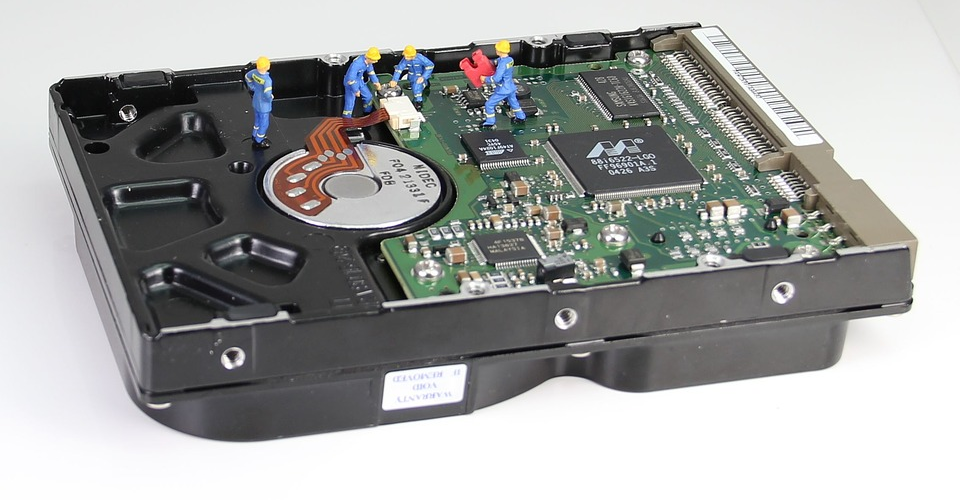
nice
what about of PCle SSds, is not work like hard drive?